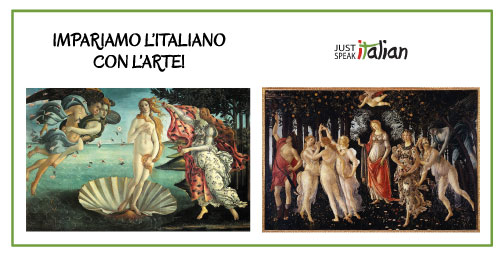28 Feb

Quando si impara una lingua è fondamentale variare le attività. Nei nostri articoli ci impegniamo a proporre modi sempre diversi con cui imparare vocaboli o esercitarsi con l’italiano.
Ecco perché oggi vogliamo concentrarci su una nuova attività che può stimolare l’apprendimento attraverso la creatività. Hai mai pensato alle risorse che offre il campo dell’arte?
When we learn a language, it is essential to vary the activities. In our articles we always do our best to suggest different ways to learn words or to practise Italian.
That’s why today we want to focus on a new activity which can stimulate the learning through creativity. Have you ever thought about the resources offered by the art field?
Osservando un quadro, ad esempio, possiamo allenare la nostra mente ad andare oltre quello che vediamo nel dipinto ed è proprio il “gioco” che vogliamo fare adesso insieme a te!
By observing a picture, for an example, we can train our mind to go beyond what we see in the painting and this is the “game” we want to play together with you now!
* Questi esercizi ti permetteranno di imparare un po’ di lessico di base e anche di familiarizzare con il lessico legato all’arte. Inoltre, andremo indietro nel tempo attraverso i quadri di un famoso pittore italiano!
* These exercises will let you learn some basic vocabulary and you will also familiarise yourself with some vocabulary related to art. Besides, we will go back to the past through the pictures of a famous Italian painter!
a. Leggi il testo sotto e osserva le due foto: quale quadro stiamo descrivendo?
(Read the text below and watch the two pictures: which painting are we describing?)

Al centro del quadro c’è una figura femminile, Venere. Questa donna è su una conchiglia che galleggia sulle onde del mare. A sinistra ci sono due personaggi: uno è Zefiro, che soffia sulla conchiglia per aiutare Venere a raggiungere la riva. Alla destra del quadro c’è una dea, forse Flora, che sta aspettando Venere per coprirla con un manto rosso. Il quadro ha prevalentemente dei colori chiari.
b. Questi due quadri sono stati dipinti dallo stesso pittore. Sai dire chi è?
Aiutino: è un pittore nato a Firenze nel 1445 e il suo nome inizia con la lettera B.
(These two pictures were painted by the same painter. Do you know who he is?)
Tip: he is a painter born in Florence in 1445 and his name begins with the letter B.
c. Adesso proviamo a descrivere insieme l’altro quadro. Leggi il testo sotto, osserva la foto e completa la descrizione con le espressioni seguenti.
(Let’s try and describe together the other painting. Read the text below, watch the picture and complete the description with the following expressions.)

sullo sfondo – a destra – accanto a – sopra – a sinistra – al centro
In questo quadro sono usati soprattutto colori scuri. _______ troviamo la figura della dea Venere. _______ la testa di Venere, c’è il figlio Cupido. _______ c’è un’altra donna, che indossa un abito con una fantasia a fiori. ________ Venere sono dipinte le “tre Grazie”, che danzano con abiti bianchi. _______ delle tre Grazie c’è un uomo, Mercurio, con una spada e un mantello rosso. ________ del dipinto ci sono alberi di arancio.
Scarica il pdf per stampare gli esercizi con le soluzioni!
Download the pdf to print the exercises and their solutions!
Se l’arte ti appassiona, non perderti il nostro Workshop sulla Ceramica Italiana il 6 Marzo!
If you are interested in art, don’t miss our Workshop on Italian Pottery Art on the 6th March!
